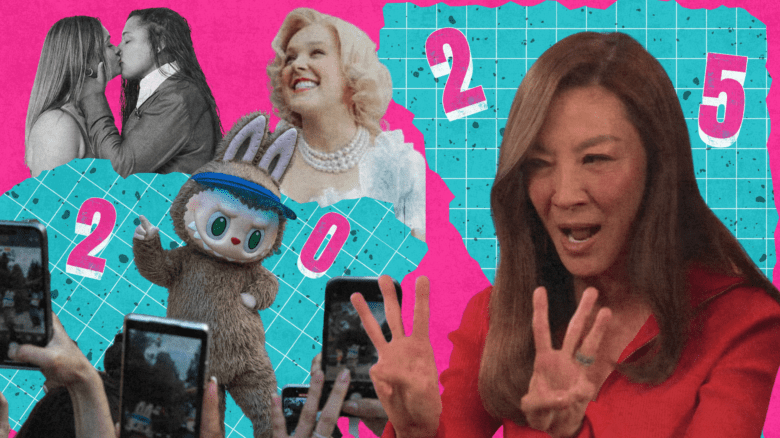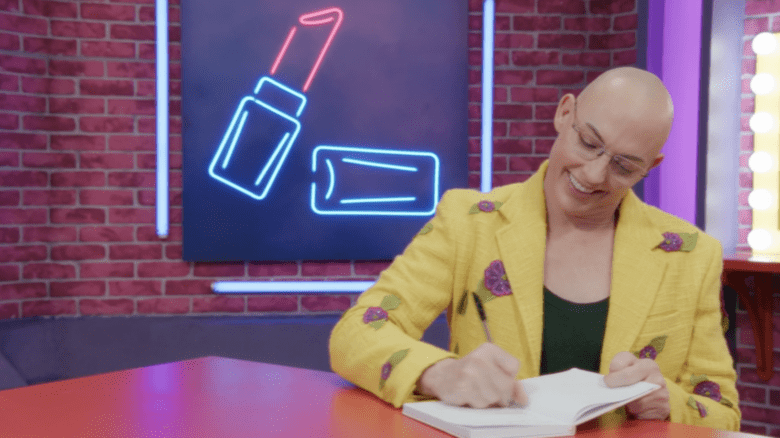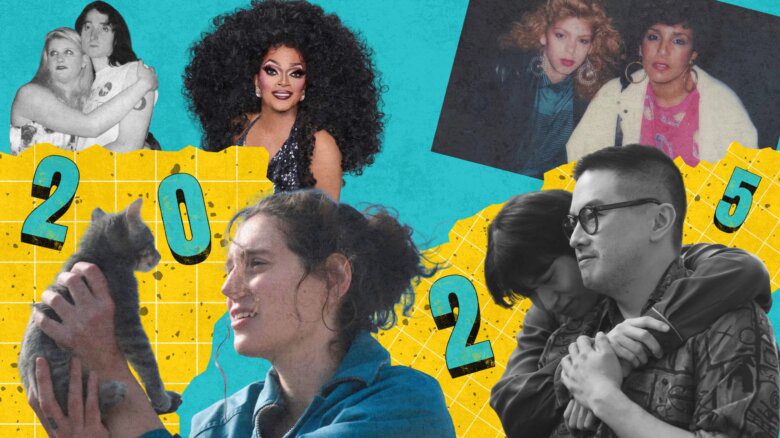The intrinsic human need for love and connection can feel a lot like an insatiable hunger. It can also feel like alienation, especially for a young person navigating the world for the first time. These intense, raw, monstrous desires feel as though they’re only happening to you. You’re alone in this strange new phase of life, and you have no knowledge of how to grab the reins and steer yourself in the right direction.
The opening scenes of Bones and All, the newest film from director Luca Guadagnino (Call Me by Your Name), are undoubtedly queer, and perfectly capture the terror of coming of age. In 1980s Virginia, soon to be 18-year-old Maren (Taylor Russell) is at a slumber party. She’s new at her high school, and her strict father (André Holland) doesn’t allow her many opportunities to hang out with other kids. At one point in the night, Maren is pressed shoulder-to-shoulder with another girl, their faces inches apart as they gaze deeply into each other’s eyes. Maren talks about her mother, who left the family when she was an infant. The other girl listens intently, waving off the rest of the girls when they interrupt.
There’s an undeniable spark, and for a moment, it feels like the two might kiss—until Maren suddenly takes the girl’s finger into her mouth and bites it off. She bolts out the door, leaving the group of screaming girls behind.
Maren is a cannibal, or in this world, an “eater.” Being an eater is a hereditary trait, a natural urge that persists even through Maren’s moral compass and resistance to hurt people. Their existence is unknown to most of society, and only eaters can sniff out and recognize other eaters. Think vampires, but without the undead or burning-in-the-sun aspects.
After Maren’s father abandons her on her 18th birthday, she meets a charismatic vagabond named Lee (Timothée Chalamet), who is also an eater. The two fall in love and embark on a road trip set to blue-hour skies and Joy Division across the backroads of Midwest America in search of Maren’s mother.
As grotesque and hard to stomach as it is at times, I was left spellbound by Bones and All. Tragic “us against the world”-type love stories with an impending sense of doom looming over them are my kryptonite. Mix together Guadagnino’s cinematic storytelling, Russell’s and Chalamet’s magnetic performances, Arseni Khachaturan’s dreamy cinematography juxtaposed with horrific gore and Trent Reznor and Atticus Ross’s delicate acoustic score, and you’ve got one of my favourite movies I saw in theatres this year.
What really sunk its teeth into me, however, was the ways the queerness of the lead characters presented in metaphorical (and sometimes literal) ways. Guadagnino, who is gay, interwove this queer subtext throughout the story. The finger-biting scene evokes the spirit of being a young queer and accidentally kissing your best friend you have a crush on or slipping up and saying the wrong thing around them (albeit with a lot less blood, I hope). Lee has also already been lovingly headcanoned as a transmasc figure on Twitter and Tumblr spaces. His punky mullet, feminine-cut shirts and a tattoo that reads “Adam Eve and Steve” are physical indicators of queerness, especially when sported in a conservative 1980s Midwest. (And hey—bisexual men and bisexual women date and are still queer in those relationships!)
Guadagnino and screenwriter David Kajganich’s choice to set the story in the ’80s was a deliberate change made from the film’s source material, Camille DeAngelis’s 2015 novel of the same name, which takes place in the late ’90s. Guadagnino’s backdropping of Reagan’s America at the height of the HIV/AIDS epidemic and the queerphobic panic and stigma that it bred only adds to the ostracization and self-loathing Maren and Lee grapple with. Sully (Mark Rylance), an older eater with sinister intentions, represents what being rejected from society and living without community can do to an individual.
The use of cannibalism to represent queerness bridges other themes including familial abuse and trauma, as well as addiction. Both Maren’s mother Janelle (Chloë Sevigny) and Lee’s father, who is physically abusive to his children, are eaters. One abandoned her daughter to figure out her condition alone, while the other routinely beat his children. Maren eventually tracks down Janelle, who has voluntarily committed herself to a mental facility. Janelle attempts (and fails) to eat her daughter, convinced that mercy-killing Maren will save her from a life of pain. It’s a bleak realization—for Maren and for the audience—that the parental figures choose destructive options that tear their families apart instead of guiding their children through this aspect of their lives that they might not understand.
Addiction is also a prominent motif. The characters move and react as though they’re experiencing a high of some sort when feeding, and Lee is even called a “junkie” by a more advanced eater. Though the act of devouring another human is objectively reprehensible, Bones and All offers empathy and compassion to these characters tortured by the parts of themselves they cannot understand. Of course, these readings aren’t explicitly linked to queerness alone, but experiences familiar to queer folks—particularly in the ’80s—like family abandonment and the casting aside of people in need of help makes the queer subtext stand out even clearer.
Equating fluid sexuality or gender identity with cannibalism might sound harmful on the surface, but the film doesn’t condemn queerness or depict it as inherently violent, nor does it romanticize cannibalism. The scenes of eaters consuming human flesh are stomach-churning, yes—the sound design is particularly nauseating—but cinematographer Arseni Khachaturan frames these images in neutral ways. There’s no empowering music playing in the background, no heavily stylized Euphoria-esque camera shots of teeth gnawing through meat to make our protagonists look cool. If anything, the characters resemble animals in a nature documentary being filmed from afar as they feast.
The one explicitly gay scene in the film happens when Lee seduces and has sex with a male carnival worker—and then eats him with Maren afterward. Admittedly, it was a moment that made me feel uneasy, which is saying something about a movie drenched in gore. What is this scene implying when viewing it through a queer lens? I thought to myself. Ultimately, what I feel is being communicated here is this: survival is ugly. Not having a better solution when forced into situations outside of your control is ugly. Regret and guilt, which is what Maren experiences in the aftermath of what she and Lee have done, is ugly.
But what isn’t ugly is the idea that there is a place for even the most isolated of people discarded to the fringes, and that community for people who have none is absolutely vital in finding the strength to keep going. This is what Bones and All lays bare for the audience—beneath the carnage and grime, there is tenderness and understanding. Maren and Lee’s love story is plagued with tragedy, but they don’t have to face it alone.
“It’s about children being lost in the wilderness and having to find a way back home,” Guadagnino said in an interview, “and finding that there is no such place as home, and that will invent the possibility of home.” And above all, Maren and Lee’s found family very well may be the queerest part of Bones and All.


 Why you can trust Xtra
Why you can trust Xtra


